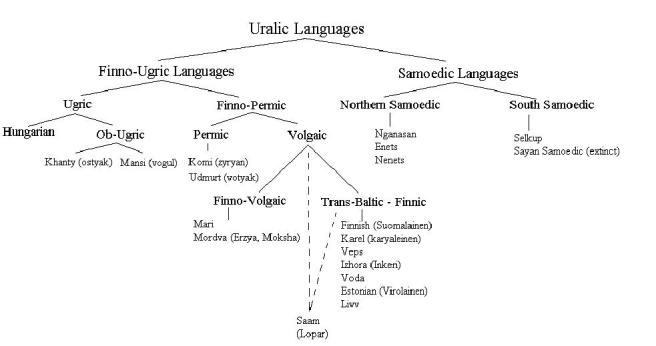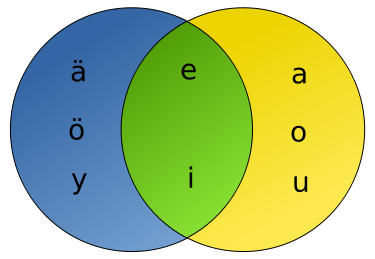I’ve received some interesting correspondence in regards to my last post about the different between the Korean and the Finnish ESL education models. Some feel that I have over-generalized my experience and claims, that there are many schools in Korea that teach English just as effectively as any school in the world and that their students speak English as well as any other . I’ll agree (I don’t know what schools these are, but I won’t deny their existence). When I say, “korea is ____” that is going to be, without question, an over-generalization and while I could do better and write more precisely, I probably won’t and it might be just as well to think of “korea is ___” comments to be more aimed at a popular opinion. Either way, criticism accepted.
A more interesting argument comes from those who accept the claim that the Finns do ESL education better, but say it has to do with language in general. This type of claim goes something like this: Finnish exists in a world where English is much more prevalent culturally and is much more closely related linguistically. Korean is far removed from English and so it makes sense that Koreans would have a harder time learning English.

An interesting idea, to be sure. Linguists of a sort have been asking questions like, “why do some languages seemed to be more difficult to learn than others?” for awhile and it does seem like Korean is a harder language for an English speaker to learn than say, Spanish.
There is an important twist here though. Finnish isn’t related to English any more than Korean is. The story in the Korean Times even seemed to check into this and wrote:
“Finnish, dominantly spoken throughout Finland, is in the Altaic language family, the same as Korean.”
Here’s the even bigger twist—Finnish isn’t part of the Altaic language Family! And there is no conclusive evidence that Korean is either. Sincerely, I wonder how this sort of thing gets going in the first place. Let’s start with Finnish.
Finnish is part of the Uralic language family. Its prominent living sister-languages are Hungarian and Estonian. Hungarian makes up 56% of the families’ living speakers, Finnish has 20% and Estonian at 4.2%. The Uralic languages are mostly located in eastern Europe or northern Asia and are the kinds of languages we see dying out in favor of more imperialistic languages like Russian.
 Let’s move on now to the idea of difficulty in learning English for the average Finnish speaker. What would make that easy or difficult?
Let’s move on now to the idea of difficulty in learning English for the average Finnish speaker. What would make that easy or difficult?
Let’s start with some basic grammar. Finnish is an SVO language, meaning it organizes its grammatical parts like this: Subject –> Verb –> Object, precisely in the fashion that English does. This certainly would be helpful to the Finnish learner of English. However, Finnish is also an agglutinating language. Meaning, the various grammatical parts of a word are added, usually, by affixes. English does this as well, but not to the same degree as Finnish. Finnish does not use auxiliary verbs like English (may, will, to be), instead these functions are affixed onto the main verb. Finnish also uses case markers to signal what is the subject and object of the sentence, meaning word order isn’t as important as it is in English. (The common quip “dog bites man” is nothing, but “Man bites dog” is news).
Lastly in grammar, Finnish doesn’t separate ‘he’ and ‘she’, which can lead to amusing comments by Finnish ESL learners. (similar to the funny comments English Speakers learning Romance [Spanish] languages make when learning gender agreement).
Onto phonology. The central feature of Finnish phonology (in my eyes anyway, I love this) is what we call Vowel Harmony. Vowel Harmony pops up in languages all over the world, not just Uralic languages, and can vary in its degree or how it is accomplished. But the basic idea is that a certain vowel in a word (which, in agglutinating languages can mean very big changes with things like, a change in tense or person) will change the quality of a nearby vowel so that they will share a certain feature. For example, in Finnish, front vowels (hill, heel, hell) cannot be near back vowels (cute, cough). This can make the progressive aspect difficult for Finnish speakers. Words like ‘coughing’ where the [ɔ] and [ɪ] vowels would not co-occur in the same word in Finnish, but occur frequently in the English progressive aspect.
 Some other phonological problems include the lack of the English [θ] (th) in words like ‘thought’, and no difference between tense and lax vowels like ‘heel/hill’. And finally, stress. English generally places stress on the penultimate syllable (a rule that changes depending on dialect. For example the British la-BO-ra-to-ry and American la-bra-TO-ri ‘laboratory’), while Finnish places stress on the initial syllable.
Some other phonological problems include the lack of the English [θ] (th) in words like ‘thought’, and no difference between tense and lax vowels like ‘heel/hill’. And finally, stress. English generally places stress on the penultimate syllable (a rule that changes depending on dialect. For example the British la-BO-ra-to-ry and American la-bra-TO-ri ‘laboratory’), while Finnish places stress on the initial syllable.
An interesting sociolinguistic difference that I have not really looked into is how politeness is conveyed. English conveys politeness with added words, such as “please”, even going to absurd (my opinion, of course) lengths with phrases such as, “would you be so kind as to….” Finnish however, focuses on tone to convey politeness, which may make Finns sound very direct and abrupt when speaking English. (note: I am not saying Finnish has no word for please, or that they don’t convey politeness at all via words, just that the focus is more on tone. The same goes for English, tone is important to politeness in English as well, it’s just that we focus on other things, like “please” more).
I have written previously about differences between Korean and English, so instead of doing that, I’m going to comment on the relative difference between Korean and Finnish to English.
To begin, word order. This is a difference. Korean is SOV. And Korean often omits not just the subject but the object as well, leaving just the verb and its inflections along with tone to convey meaning. To explain, it would be like saying, “Hungry.” To mean, ‘I am hungry.’ While using a rising, questioning tone, “Hungry?” to mean, “Are you hungry?” English speakers probably have no problem with the question-form (“hungry?”) but the idea that “hungry.” Is a grammatical phrase is a stretch for English speakers, and I assume Finnish speakers as well.
Korean is, however, an agglutinating language like Finnish. And as such, word order (when it is implemented) is not as strict in Korean as it is in English (the man/dog thing again). Also, much like Finnish, Korean lacks the strict equivalent of “he” and “she” that exists in English. Many of my colleagues have extensive problems with getting the right personal pronoun when speaking with me and I am actually surprised at the level of misunderstanding this can cause for me, though I am getting better at making sure I keep the referent in mind and simply applying “he/she” to whoever it is.
As far as Phonology goes, modern Korean does not exhibit vowel harmony like Finnish, but it used to. Old Korean had a system of vowel harmony very similar to Finnish but was described instead in terms of “light” and “dark” or yin and yang. In modern linguistic terms, it is a tongue root harmony (front –back) with a neutral (schwa) vowel that can swing both ways. I always like a chance to point out Korea’s long-love of linguistics and the fact that Korean has a description that is definitively not linguistic for their vowel harmony shows how involved and knowledgeable the middle-Korean scholars of language were. The vowel harmony exists still to some degree in diminutive adjectives and adverbs and some other forms, but is largely gone from the language. Hard to say it makes speaking English difficult.
Stress, however, is a problem. Unlike Finnish and English, Korean is a syllable-timed language. (sometimes said to have no stress but that is technically incorrect). Stress is spread equally across a phrase and can lead to some wonky pronunciations in English. One of the reasons I am in favor of teaching Korean ESL leaners about English vowel reduction, as it necessarily reinforces and focuses the student on syllable-stress, while giving them the tools to predict how to pronounce any given word.
Other phonological problems similar to Finnish is the lack of the [θ]/[ð] sound. Korean takes it a step further to [v]/[f]. It seems Koreans have a hard time putting anything in the space between their teeth, I wonder if they bite their lip less than English and Finnish speakers!
Finally, as far as politeness is concerned, Korean uses an extensive system of honorifics that don’t exist in English outside of kingly speech (speaking in 3rd person so as to not directly address someone higher than yourself, “if it pleases the king”) and things like “sir” and “ma’am”. I’m not aware of the Finnish equivalent.
So, is it fair to say that Finnish speakers learn English easier than Korean speakers? Probably not. At least not based on the idea that the language itself is the reason Koreans have more difficulty learning English than Finns. Culture may play a larger role and the relative “distance” of Finnish culture to European (which is closer to English culture) culture compared to the distance of Korean culture to American culture may be relevant. I can’t say.
Based on the similarities that Finnish and Korean show, however, it seems like a forgivable mistake that someone, like the Korean Times reporter, might think they are from the same family. The lesson should be that, regardless of whatever shame we might feel as either ESL educators or Korean-speakers learning English, the linguistic difference between Korean and English is probably not where we should lay the blame.
I might return to talk about why describing Korean as an Altaic language (as everyone around here who knows anything about language seems to want to do) is not fair at some later date.

Reblogged this on lifelovelanguage.
LikeLike
do you think it would be easier for Korean speaker to learn Finnish instead of English?
LikeLike
I hadn’t thought of it from that direction. From a purely grammatical view, it might be possible; I don’t understand Finnish grammar to level that I could say anything of value on the subject. I am of the opinion that in terms of “distance”, Korean and Finnish are roughly equally distant from English, but whether that distance looks like a ” V ” or an ” L “, I don’t know.
Beyond grammar though, I think you’d find it much more difficult for a Korean to learn Finnish in terms of motivation. A Korean is *far* less likely to need Finnish (or least, perceive a need), than English. They would have to be very motivated (perhaps married to a Finn, or living in Finland). Koreans are also much more aware of American culture, which gives them motivation and a step in the door. Many Korean schools insist their Native English Teachers speak in an American accent (which is ridiculous in the first place, but also very difficult for many non-american English speakers), for the reason that Koreans are more American-oriented.
LikeLike
I partly disagree with this article.
Many linguistics research tried to come up with a reliable way to assess the distance between English and other languages, only to conclude that it was too difficult a task (you just have to read the 144 [non-comprehensive] parameters listed by the World Atlas of Language Structures to understand why).
However I did find an interesting research that used a different, more straightforward approach. Its basic assumption is very simple: if native speakers of English, on average, can learn language A much quicker than language B, then it can be said that language A is closer to English than language B. But they needed to verify this hypothesis.
To do so, they first used a previously existing scale which states how (un)easy it is for English speakers to learn such and such language and provides a score for each of these languages accordingly. Afrikaans, which is very easy to learn is rated 3.0. The much slower to learn Japanese language is rated 1.0.
If their basic assumption is right, native speakers of languages rated 1.0 should have much more difficulties in English acquisition than native speakers of languages rated 3.0. To verify the validity of this claim, they compared the level of proeficiency of various migrants of different native languages after 5 years and after 15 years spent in Canada, controlling various variables such as prior time spent learning English in home country, education level, etc.
The results are consistent with their theory. Native Korean and Japanese speakers were 5 times as likely to be still unable to carry on a conversation in English or French after 5 years spent in Canada than speakers of Swedish, Afrikaans or Rumanians.
The interesting part is that Finnish is rated 2.0. and is therefore supposed to be twice as close to English than Japanese and Korean are. Consistently, the speakers of this language are only twice as likely to have such poor conversational skills after five years than speakers of languages closer to English.
But the most depressing part is that 10% of Japanese and Korean migrants failed to achieve a conversational level in English after no less than 15 years spent in Canada, which is 10 times as much as speakers of Swedish and Afrikaans and 5 times as much as speakers of Finnish.
So to say that Finnish speakers learn English easier than Korean speakers doesn’t seem to be such unfair a claim, after all.
Reference:
Chiswick, B. R., Miller, P. W. (2004). “Linguistic Distance: A Quantitative Measure of the Distance Between English and Other Languages”. Journal of Multilingual and Multicultural Development, 2005, 26 (1), 1-11
LikeLike
You are actually correct in saying Finnish doesn’t have a word for please, there’s plenty of work around for it but no actual word with that meaning, they also don’t have a word for have, which is mind-boggling to most English speakers.
LikeLike